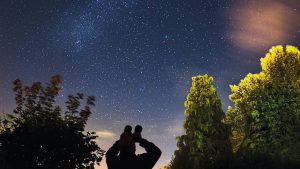“Seeing confusion as the four kayas is unsurpassable shunyata protection”
This is the 14th of the Buddhist lojong slogans: 59 phrases that assist a practitioner’s mind training on the path of waking up. It isn’t the easiest slogan to penetrate, especially on first reading – but I want to use it this week to continue unpacking how the “practice of human being” (the title of my book) manifests through the paths of meditation and therapeutic understanding. Last week I shared that a consistent practice of meditation has brought a shift in allegiance from the contents of experience to that which is aware of experience. For me, this has undoubtedly enabled an untangling of the knots tied in life. However, it is one thing to recognise the waves of experience whilst sat still, alone on the cushion; how does this transfer in the world? As I once heard Buddhist scholar and teacher Robert Thurman exclaim…
“Practice, practice, practice…enough of the rehearsal, what about the real show!”
As if “on demand”, overnight my body-mind offered an opportunity so that I could present a fresh illustration. I woke at 1am. I visited the bathroom and then went back to bed. I settled, cuddled the cat…and then it occurred to me, “mmm, sleep is not coming back”. No-thing on my mind, and no apparent thing waking me. I was simply awake. As I lay there, I could feel an impulse for the narrative to rev up; and an almost simultaneous bodily reaction – the inward pulsing in the chest, what I would label ‘anxiety’. As the existentialists remind us, “anxiety strives to become fear” – the search for an object, the search to make some-thing out of no-thing. For me, this is where the rubber meets the road. Not to meditate in order to find sleep – this would kinda contradict the purpose of meditation to wake up; rather, to make that switch in allegiance I spoke of last week.
 I roll onto my back, still in contact with my cat, I stroke her, feeling her fur, enjoying the soft purr that she rouses. It’s as if that is the cue to follow my own breath – to hear it, to feel it, to become it. With each out breath, I feel myself connect more deeply into the mattress. As I would on the meditation cushion, I let go of the breath and open to awareness. I feel my body expand, and simultaneously, notice the sensations coursing through: the deep pulsing in my chest, the pulse in my stomach, a tightness in my neck. I remember a teaching from Rupert Spira “if you close your eyes, how do you know you have a body?” I move attention from the solid form and connect only to the sensations as points, as if they were stars in the night sky. Again, it evokes the archetype of the psycho-naut, an explorer of experience.
I roll onto my back, still in contact with my cat, I stroke her, feeling her fur, enjoying the soft purr that she rouses. It’s as if that is the cue to follow my own breath – to hear it, to feel it, to become it. With each out breath, I feel myself connect more deeply into the mattress. As I would on the meditation cushion, I let go of the breath and open to awareness. I feel my body expand, and simultaneously, notice the sensations coursing through: the deep pulsing in my chest, the pulse in my stomach, a tightness in my neck. I remember a teaching from Rupert Spira “if you close your eyes, how do you know you have a body?” I move attention from the solid form and connect only to the sensations as points, as if they were stars in the night sky. Again, it evokes the archetype of the psycho-naut, an explorer of experience.
Yet there is NO explorer (subject) of experience (object). When allegiance switches to awareness, the duality collapses. There is only experiencing. It is not possible to separate out the act of exploring and the sensations – both reside in awareness, there is simply “sensing”. This is what the Buddhist dharma points to when it says reality ‘out there’ is an illusion. As a Vajrayana student of Buddhism, THIS is my practice; in fact, this is my life “mission” – to recognise moment by moment the illusion of a separate ‘me’.
As I write this morning, there is a flurry of snow falling. In moments of contentment and stillness (states I experience when writing), it is somewhat easier to stay in connection with awareness. Moving from the perception of the snow flakes to awareness that knows. It is harder (wobbling toddler-like!) to take this ‘step’ when in the heat of an intense emotion, or a volatile / precarious life situation. But essentially the Vajrayana path is one of using experience to highlight and recognise the constant, ceaseless presence that is our true being. When “I am anxious”, who is that “I”? Where is “she”? When there is recognition of not being a separate self, I feel no different to the world, interconnected or interdependent. The Vajrayana teachings point to this connection as Sacred World: mind, body, and emotions, self and other, self and world as a harmonious whole.
Back to our lojong slogan “Seeing confusion as the four kayas is unsurpassable shunyata protection”. Confusion in this case would be pinning the experience “anxiety” on a separate “I”, and making it a thing (rather than an energy, or “lung”, wind). The slogan invites us to consider confusion as a composite.
I talked about meditation practice in the context of the kayas last week: dharmakaya (the body of truth, beyond form, beyond concept, beyond existence or non-existence); sambobhakaya (the body of enjoyment, communication, play, energy); and nirmanakaya (the body of manifestation, form). There is a fourth – svabhavikakaya: the realisation of the ultimate truth in its entirety. In the example I offered earlier, the totality of this experience (as viewed from the Vajrayana or ultimate truth):
Dharmakaya – the spacious presence or awareness that knows the experiencing (lets call it ‘mind’)
Nirmanakaya – the physical body, feeling my weight in the mattress, the touch contact made with my cat (and all other sense gate experience). This is sometimes called the gross body.
Sambobhakaya – the subtle, or energy body. Last night, this was a ‘buzz’ which was somewhat identifiable in location yet present.
Svabhavikakaya is the realisation that none of the above are separate. All the three kayas are simultaneously present.
How is this ‘protection’? What is this ‘shunyata’ being protected?
Being with the totality, experiencing on the level of the four kayas, ‘protects’ by helping us stay open and receptive to the play of experience ‘as it is’. Confusion, or ignorance of the way things are (as empty of inherent existence or shunyata), is what causes suffering in the Buddhist view. ‘My’ sleeplessness could be experienced as a failing, that there is something ‘wrong’. This is NOT to say sleeplessness is pleasant, desirable and something we invite – there is a difference between allowing and resignation: I continue to do what I can to enhance the causes and conditions to bring sleep. But to struggle against ‘what is’ will do me no good. Dropping the narrative (and resistance to ‘what is’) helps me dis-identify with the waves and drop into the ocean, and again, connect with the inherent sacred wholeness of life ‘as it is’.
Adopting this View means these days there is less separation between formal practice and practice in the world – not quite a seamless transition from on the cushion / off the cushion, but I see a movement that way. I also feel it pervading my client practice and my time with students in the training room. I will perhaps write about this next week.

